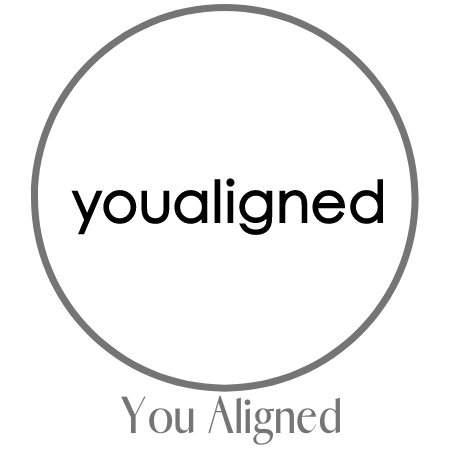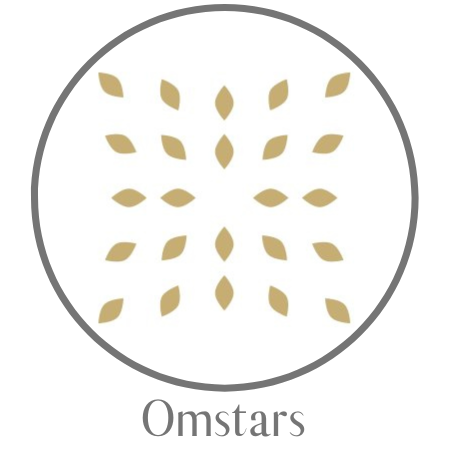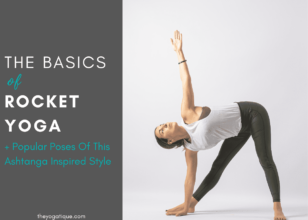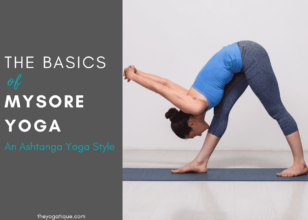If you’ve been practicing yoga for a while, chances are you’ve heard of Iyengar yoga but may have wondered what Iyengar yoga is and what are its benefits. This is where I come in to break it down for you! Let’s explore all of this and more in this introduction to Iyengar yoga and Iyengar yoga classes.
The Iyengar style yoga is a specific yoga method from the same lineage as Vinyasa and Ashtanga yoga. Iyengar yoga falls into the category of yoga as an exercise, similar to the aforementioned styles of yoga.
Like other yoga styles, Iyengar yoga helps cultivate a mind-body-spirit connection while building strength and flexibility. Still, Iyengar is a unique practice; in my experience, students either love it or hate it.
Article content:
(Click any link below to jump directly to section)

SEARCHING FOR THE BEST
ONLINE YOGA MEMBERSHIP TO JOIN?
Online Yoga Subscriptions Offer
- 1,000's of classes
- Best instructors
- Affordability
- Flexibility
⬇Click below for the best online yoga memberships ⬇
What is Iyengar yoga?
Iyengar yoga (pronounced eye-yen-gar) derives from the Hatha yoga lineage. It was developed by famous teacher and author B.K.S. Iyengar. The Iyengar method is based on the eight limbs of yoga stated in the ancient yogic text, the Yoga Sutras by Patanjali.
Iyengar yoga is known for its emphasis on correct alignment, structural alignment, and precise technique. Like Hatha yoga, Iyengar combines asanas (poses) and pranayama (breath) to build strength and stamina and increase flexibility.
However, one key difference between Iyengar and classic Hatha yoga is that you typically hold the postures for longer in an Iyengar yoga class and they'll often use props. These slower movements help you find the proper alignment, so as a result, you usually do fewer yoga poses than in a Hatha class.
According to B.K.S. Iyengar's book, Light on Yoga, there are over 200 Iyengar yoga poses. They are grouped into the following categories:
- Standing
- Sitting
- Forward bending
- Back bending
- Twisting
- Inversions
- Supine
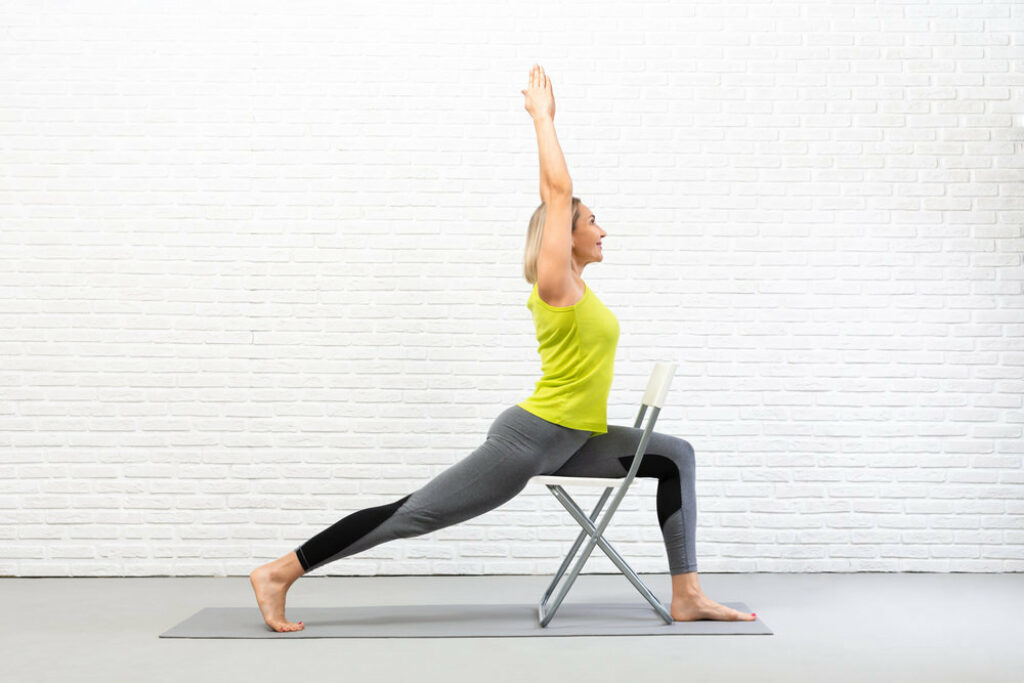
The history Iyengar yoga
B.K.S. Iyengar learned yoga from Tirumalai Krishnamacharya at the Mysore Palace in India, the same place Ashtanga yoga founder Pattabhi Jois studied. It is believed he began teaching his style of yoga in the early 1950s, and the first Iyengar Yoga Institute in Pune was founded in 1975.
Since then, Iyengar has opened institutes in London, San Francisco, Los Angeles, and New York. Although it's not the most popular modern yoga style, there is a significant number of Iyengar yoga students worldwide and thousands of certified Iyengar yoga teachers.
7 benefits of practicing Iyengar yoga
Practicing Iyengar yoga poses offers numerous benefits, including improved alignment and posture through precise attention to detail. This method also enhances strength and flexibility by using props to support and deepen the practice, making it accessible to individuals of all fitness levels. Additionally, Iyengar yoga promotes mental focus and relaxation, contributing to overall well-being and stress reduction. Here are seven benefits of Iyengar yoga:
- The standing poses help to build strength in the legs and core and improve stamina.
- The sitting poses help to improve flexibility in the spine.
- The forward folds improve posture and spinal mobility while creating a calming effect.
- The back-bending postures improve spinal flexibility, open the heart, and create an energizing effect.
- The twisting poses help to aid digestion, improve circulation, and promote spinal health.
- The inversions help to relieve stress and anxiety, boost energy levels, and improve circulation.
- The prone poses help cool down and relax the body, stretch the hips and hamstrings, and promote tranquility.
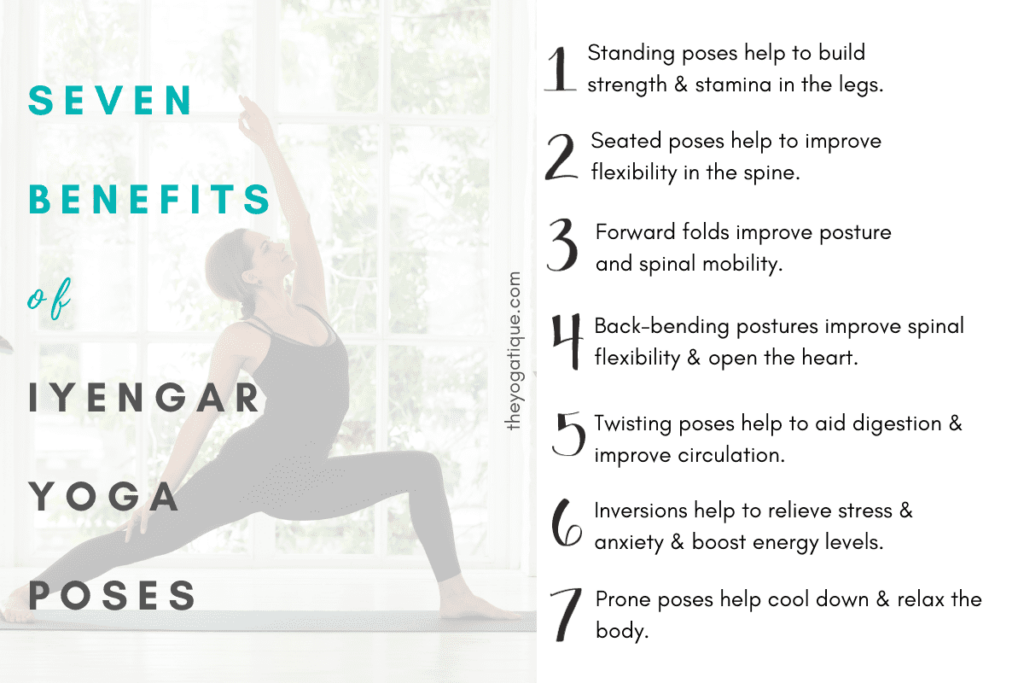
↓Great online yoga memberships you should look into↓
Iyengar yoga Vs Vinyasa
As you may know, Vinyasa and Iyengar derive from the Hatha lineage of yoga. This is important to remember, but there are many different types of yoga, and they are all slightly different. Here are a few key differences between Iyengar yoga and Vinyasa yoga:
1. Pace of classes
Iyengar: much slower than Vinyasa. In Iyengar, the postures are practiced separately without transitions or flow. You also hold each asana for more than five breaths, usually up to one minute. Thus, Vinyasa focuses more on transitioning from one pose to the next. In contrast, Iyengar is more about finding the proper alignment.
Vinyasa: Vinyasa yoga is much faster than Iyengar. In Vinyasa, you typically practice the yoga postures in a flow, linking them together by moving breath to movement. Thus, you very often take just one breath in each pose, or you may hold a posture for five breaths at other times.
2. Props used in classes
Another key difference between Vinyasa and hatha yoga styles is the use of props. Iyengar uses props like blocks and straps much more than Vinyasa yoga.
Iyengar: consistently uses many more various props.
Vinyasa: uses blocks and straps as needed.
3. Teacher training
Iyengar: teachers must undergo a more extended and in-depth 800-hour training, which can take years.
Vinyasa: yoga teacher training is only 200 hours and can be completed in just a few weeks (when studied as an intensive course)
Similarities between Iyengar and Vinyasa
While there are several key differences between the two styles, there are certainly some similarities, which is to be expected as they originate from the same lineage. Here are a couple of similarities between Iyengar and Vinyasa.
1. Shared yoga poses
One similarity is that they share many of the same yoga postures. They also follow the same basic class structure of warm-up postures, standing poses, and cool-down.
2. Both practice sun salutations
Moreover, like Vinyasa and Hatha yoga, Iyengar practice involves Surya Namaskar (Sun Salutations). You'll find Sun Salutation A in an Iyengar class, the same variation practiced in Vinyasa yoga practice. However, sun Salutation A is different from the traditional Hatha yoga sequence sun salutation.
Can a beginner do Iyengar yoga?
Because of its strong focus on finding the correct alignment, Iyengar is one of the best yoga styles for beginners.
The advantage of Iyengar yoga is that you have plenty of time to feel each posture and experience it in your body. The extended time also allows the Iyengar yoga teacher to go around and give adjustments to correct any wrong alignment so that you don't pick up a bad form.
However, it's important to note that although the pace of an Iyengar yoga class is slower than other styles, this doesn't mean the intensity is less. In fact, Iyengar yoga can be more challenging as you have to hold each pose for longer, working the muscles more. Thus, Iyengar is not classed as a restorative or easy style of yoga.
Props used in an Iyengar class
In an Iyengar class, you'll work with blocks, straps, blankets, and bolsters in all types of asanas, but more so in forward folds and backbends. Chairs, benches, and stalls can also be used in certain poses, such as Ustrasana (camel pose). Three reasons props are used in Iyengar classes are:
- To support the body
- To account for injuries or physical limitations
- To increase the benefits of Iyengar yoga by helping the practitioners find their depth in a pose and maintain it
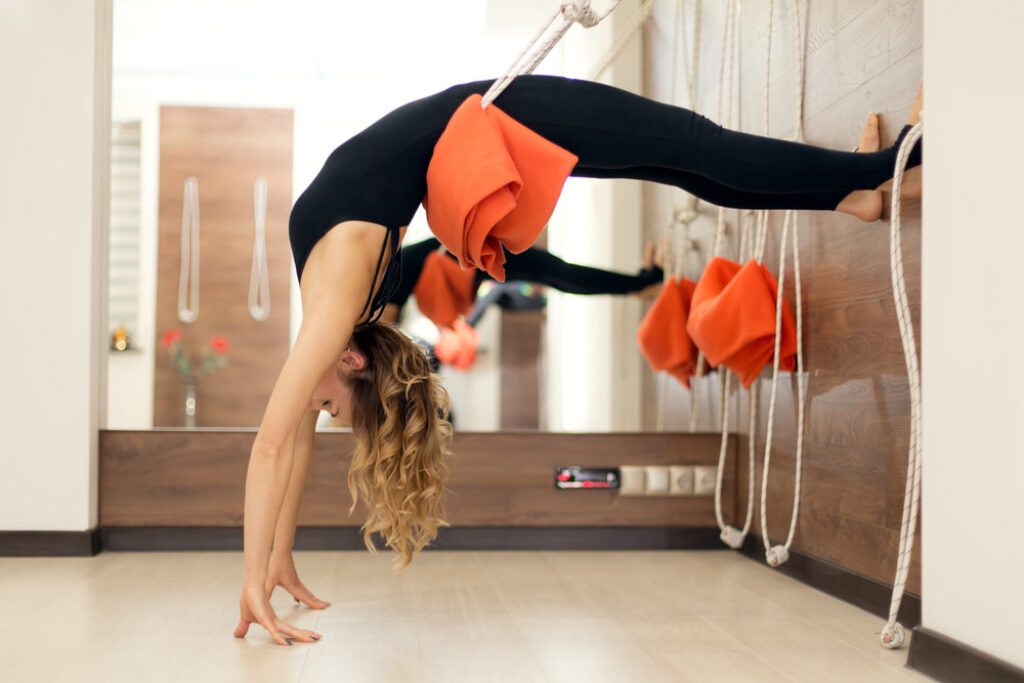
Takeaway
So, let's recap, Iyengar yoga is an accessible style of yoga for all levels, from beginners to advanced, centering around alignment, focus, and precision. If you want to improve your alignment, why not give Iyengar a go?
FAQ about Iyengar yoga
Is Iyengar Yoga for beginners?
Iyengar yoga is good for beginners because of the strict following of alignment principles and the incorporation of yoga props.
What is the Iyengar method of yoga?
In Iyengar yoga, emphasis is given to the execution of proper alignment, balance, stamina, strength, concentration, and flexibility, among other things.
Some online yoga studios, online yoga teacher training programs, and brands that we write about may offer us a small commission should you decide to make a purchase or signup after reading our content. Thank you for enabling us to exist!



